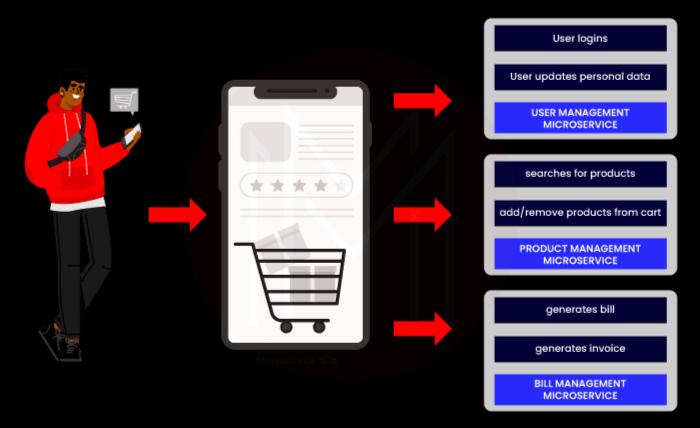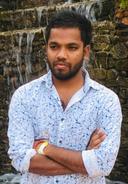- Home
- Blog
- Microservices
- Microservices vs API

- Cloud Native Microservices
- Microservices Interview Questions
- Microservices Tutorial
- Microservices With Spring Boot
- Security in Microservices
- Microservices vs SOA - What's the Difference?
- What is Microservices?
- Top Microservices Tools
- Top 10 Microservices Design Patterns and Principles
- Microservices Projects and Use Cases
The digital world is constantly changing. And, to be successful and keep up with the changing environment, it is always a good practice to research what is coming next. Likewise, there are two major services in the market microservices, and API.
Microservices and Application Programming Interfaces (APIs) have diverse roles in the software development process. Considering that there is an overlap between these two, it could be a bit confusing to understand the difference. In this post, let’s highlight the microservices vs API comparison and find out similarities as well as differences.
| Microservices vs API - Table Of Content |
| Want to enhance your skills in dealing with the world's best Microservices, enroll in our: “Microservices Training” Course. |
What Is a Microservice?
Breaking it down into two words, micro means small and service is referred to as a form of action. Hence, microservices are a microform of action that can be achieved after accomplishing a work.
A microservice, also known as a microservice architectural pattern, is a modern application developing technique that helps organize loosely coupled services. It is similar to an assembly line where each service has a specific role. Together, all of these services build a comprehensive application

Such services can be deployed independently and have to serve a certain objective.
What Is an API?
An Application Programming Interface, API, lets your applications communicate with external services with the help of an easy set of commands. Instead of creating complex processes manually, you can use an API to access the underlying services of other applications; thus, saving resources and time.

A variety of applications that you must be using every single day depend upon APIs in certain capability to function, considering that there are APIs for almost every possible category.
The Difference Between API and Microservices
Trying to comprehend the difference between microservices and API could be difficult as APIs are a vital part of the entire microservice architecture. Every microservice in the architecture will have its own API. Majorly, the API is present in front of the microservice and ensures the flow of communication between varying components of the architecture.
Microservice architecture is most likely to comprise several APIs. However, keep in mind that APIs can be used for other objectives as well, without being a part of the microservice. This is most likely where the confusion arises.
- Microservices are the building blocks that differentiate and define varying services to come up with a scalable and clean architecture whereas an API is a functional block that defines the work for a microservice
- Microservices can have one or multiple APIs
- API is a part of a microservice
Moreover, confusion may also arise from the fact that APIs and microservices may accomplish the same objective.
| Microservice | API | |
| Objective | Builds applications that help organize loosely coupled services | Allows the flow of communication among components |
| Characteristics | Modular, scalable, and decentralized | Specialized, fast, and lightweight |
| Use Cases | Used to create applications | Used to include certain functions to an application |
How Microservices Work?
Microservices come from the idea that a company offers a single, large service. Microservices generally come as individual functions. Suppose if you had to split Microsoft Word into microservices, there would be one offering a blank sheet of paper, one providing a formatting tool, one offering a spell checker, etc.
With Kubernetes, computer software has become adaptable. Although Kubernetes comes with its own set of benefits, it has pushed software designing away from one monolith of services, towards a combination of varying, small services that work together.
This is because Kubernetes design can:
- Reduce associated management as costs invested in resources
- Increase system scalability and reliability
- Effectively orchestrate the use of one container on servers
Examples of Microservices
Let’s understand more about microservices through an example. For instance, an online shopping site may have a service for shipping, another service for payments, and another service for customer care. If you take it from an application perspective:
- When you signup or log in, the transfer of username and password is executed that authenticates and authorizes the existence of your account
- When you search for a specific product, you get a list of options that are either the exact ones or match the product name you typed in
Each of these services gets handled by a specific block at the level of the application. Such blocks are known as microservices.
How do APIs Work?
In the present world, usually, APIs are developed with the help of RESTful style. Such APIs have a series of verbs that are associated with the actions of HTTP, such as:
- GET: To get a collection or a single item
- DELETE: To delete a collection or a single item
- POST: To add an item to a collection
- PUT: To edit an item that is already existing in a collection
The benefit of consistency through varying applications is that you get a standard when performing several actions. The four diverse HTTP verbs, mentioned above, correlate with common capabilities of CRUD that a lot of applications are using today. When you work with varying APIs in one single application, you get to comprehend the results of actions taken from different interfaces.
Examples of API
Here is an example to find out how APIs usually work.
- To authenticate and authorize your account’s existence, you send the login ID and password to the microservice. And then, the database is searched to find out whether your credentials exist or not.
- When searching for a product, you get a list of options. To get the relevant data according to your search, your phrases are taken and searched in the database to get a relevant response.
So, all of these and more tasks are done by an API.
Conclusion
We hope the difference between microservices and API would be clear to you by now. Choosing an option between microservices vs API largely depends upon the scale of the application. If you wish to develop a large-level application with play and plug functionalities, it would be recommended to go with microservice architecture and vice versa.
 On-Job Support Service
On-Job Support Service
Online Work Support for your on-job roles.

Our work-support plans provide precise options as per your project tasks. Whether you are a newbie or an experienced professional seeking assistance in completing project tasks, we are here with the following plans to meet your custom needs:
- Pay Per Hour
- Pay Per Week
- Monthly
| Name | Dates | |
|---|---|---|
| Microservices Training | Jan 03 to Jan 18 | View Details |
| Microservices Training | Jan 06 to Jan 21 | View Details |
| Microservices Training | Jan 10 to Jan 25 | View Details |
| Microservices Training | Jan 13 to Jan 28 | View Details |

Vinod M is a Big data expert writer at Mindmajix and contributes in-depth articles on various Big Data Technologies. He also has experience in writing for Docker, Hadoop, Microservices, Commvault, and few BI tools. You can be in touch with him via LinkedIn and Twitter.















